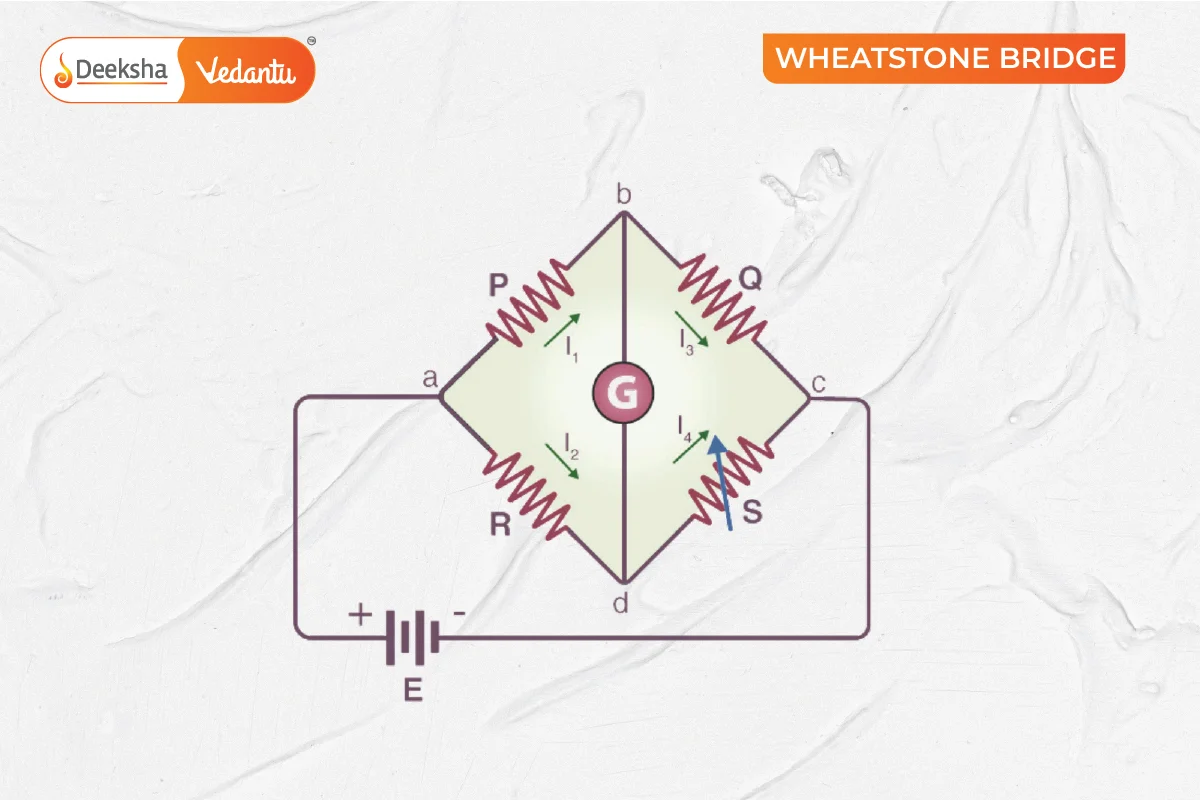In scientific investigations, measurement is a crucial aspect. Without the ability to measure, conducting experiments and forming theories becomes challenging. To measure unknown resistance in a circuit, Samuel Hunter Christie invented the Wheatstone bridge in 1833, which was later popularized by Sir Charles Wheatstone in 1843.
What is Wheatstone Bridge?
The Wheatstone bridge, also known as the resistance bridge, is used to measure an unknown electrical resistance by balancing two legs of a bridge circuit. One leg includes the component of unknown resistance. This bridge circuit is highly reliable and provides accurate measurements.
Construction of Wheatstone Bridge
The Wheatstone bridge circuit consists of four arms:
- Two known resistances
- One unknown resistance
- One variable resistance
Additionally, the circuit includes a galvanometer and an electromotive force (emf) source. The emf source is connected between points aaa and bbb, while the galvanometer is connected between points ccc and ddd. The current that flows through the galvanometer depends on the potential difference across it.
Wheatstone Bridge Principle
The Wheatstone bridge operates on the principle of null deflection. This means that the bridge is balanced when the ratio of resistances in one leg is equal to the ratio of resistances in the other leg, resulting in no current flowing through the galvanometer. The bridge is unbalanced under normal conditions, and current flows through the galvanometer. By adjusting the known and variable resistances, the bridge can be balanced, and the unknown resistance can be calculated.

Wheatstone Bridge Derivation
When the bridge is balanced, the current through the galvanometer is zero. The current enters the galvanometer and divides into two equal magnitude currents as I1 and I2. The following condition exists when the current through a galvanometer is zero,
The currents in the bridge, in a balanced condition, are expressed as follows:
Here, E is the emf of the battery.
By substituting the value of I1 and I2 in equation (1), we get
Equation (2) shows the balanced condition of the bridge, while (3) determines the value of the unknown resistance.
In the figure, R is the unknown resistance, S is the standard arm of the bridge and P and Q are the ratio arm of the bridge.
Wheatstone Bridge Formula
The formula used for the Wheatstone bridge is:
Where:
- R is the unknown resistance.
- S is the standard resistance.
- P and Q are the known resistances in the ratio arms.
Applications of Wheatstone Bridge
- Precise Measurement of Low Resistance: The Wheatstone bridge is widely used for accurate measurement of low resistances.
- Measurement of Physical Parameters: Combined with an operational amplifier, it measures physical parameters like temperature, light, and strain.
- Measurement of Impedance, Inductance, and Capacitance: Variations of the Wheatstone bridge can measure these electrical properties.
Limitations of Wheatstone Bridge
- Lead and Contact Resistance: For low resistance measurements, the resistance of the leads and contacts can introduce significant errors.
- High Resistance Measurements: The high resistance can make the galvanometer insensitive to imbalances.
- Heating Effect of Current: Excessive current can change the resistance due to heating, which may cause permanent changes in resistance values.
FAQs
Limitations include errors from lead and contact resistance in low resistance measurements, insensitivity in high resistance measurements, and resistance changes due to the heating effect of current.
The Wheatstone bridge is used for precise measurement of low resistance, measuring physical parameters like temperature and strain, and determining impedance, inductance, and capacitance.
The Wheatstone bridge works on the principle of null deflection. When the ratio of resistances in one leg equals the ratio in the other leg, no current flows through the galvanometer, indicating the bridge is balanced.
The Wheatstone bridge was invented by Samuel Hunter Christie in 1833 and later popularized by Sir Charles Wheatstone in 1843.
The Wheatstone bridge is a circuit used to measure an unknown electrical resistance by balancing two legs of a bridge circuit, one of which includes the unknown resistance.
Related Topics
- The Human Eye
- Reflection Of Light
- What is Hypothesis?
- Factors On Which The Resistance Of A Conductor Depends
- Work, Energy and Power
- Concave Mirrors and Convex Mirrors
- Electricity
- Full Wave Rectifier
- Force On A Current – Carrying Conductor In A Magnetic Field
- Thermodynamics
- Magnetic Effects Of Electric Current
- Projectile Motion
- Zener Diode
- Bernoullis Principle
- List of Physics Scientists and Their Inventions







Get Social